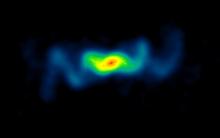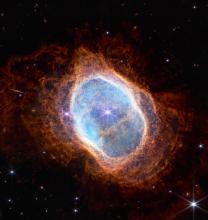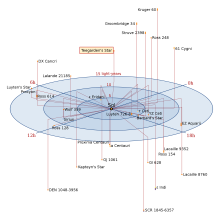Listen to today's episode of StarDate on the web the same day it airs in high-quality streaming audio without any extra ads or announcements. Choose a $8 one-month pass, or listen every day for a year for just $30.
You are here
VW Cephei
Many stars are binaries — two separate stars in orbit around each other. In some cases, though, the two stars are so close to each other that they’re actually stuck together. These contact binaries are surprisingly common. And with a pair of binoculars, you can see one tonight, in the constellation Cepheus, the king.
In 1926, astronomer Jan Schilt observed the star after another astronomer told him its spectrum resembled that of the best-known contact binary. Schilt found that the star’s brightness varied as the two stars went around each other. The variation in brightness occurred across the entire orbit. That meant the stars were so close together that one or the other was always blocking some of its companion’s light.
Today, the system is known as VW Cephei. It’s 90 light-years from Earth. No telescope in existence can see it as two stars instead of one. But the constant change in brightness means the stars are so close that they are indeed stuck together. If you lived on an orbiting planet, your sun would look like a glowing peanut, with the two lobes whirling around each other every 6 hours and 41 minutes.
If you have binoculars and a good star map, you can see VW Cephei for yourself. It’s so far north that for anyone in the United States it never sets. Over just a few hours, the system’s brightness rises 60 percent from minimum to maximum, as the two stuck-together stars race around each other in the far northern sky.
Script by Ken Croswell





